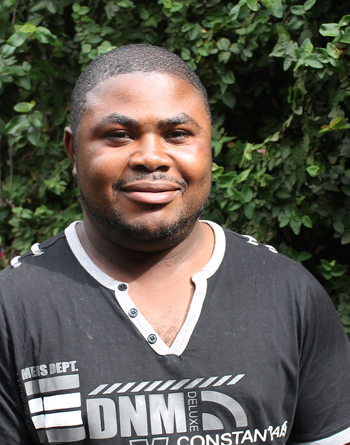
Dr Abdon Atangana
Photo: Ifa Tshishonge
|
Dr Abdon Atangana, a postdoctoral researcher in the Institute for Groundwater Studies at the University of the Free State (UFS), wrote an article related to the Ebola virus: Modelling the Ebola haemorrhagic fever with the beta-derivative: Deathly infection disease in West African countries.
“The filoviruses belong to a virus family named filoviridae. This virus can cause unembellished haemorrhagic fever in humans and nonhuman monkeys. In literature, only two members of this virus family have been mentioned, namely the Marburg virus and the Ebola virus. However, so far only five species of the Ebola virus have been identified, including: Ivory Coast, Sudan, Zaire, Reston and Bundibugyo.
“Among these families, the Ebola virus is the only member of the Zaire Ebola virus species and also the most dangerous, being responsible for the largest number of outbreaks.
“Ebola is an unusual, but fatal virus that causes bleeding inside and outside the body. As the virus spreads through the body, it damages the immune system and organs. Ultimately, it causes the blood-clotting levels in cells to drop. This leads to severe, uncontrollable bleeding.
Since all physical problems can be modelled via mathematical equation, Dr Atangana aimed in his research (the paper was published in BioMed Research International with impact factor 2.701) to analyse the spread of this deadly disease using mathematical equations. We shall propose a model underpinning the spread of this disease in a given Sub-Saharan African country,” he said.
The mathematical equations are used to predict the future behaviour of the disease, especially the spread of the disease among the targeted population. These mathematical equations are called differential equation and are only using the concept of rate of change over time.
However, there is several definitions for derivative, and the choice of the derivative used for such a model is very important, because the more accurate the model, the better results will be obtained. The classical derivative describes the change of rate, but it is an approximation of the real velocity of the object under study. The beta derivative is the modification of the classical derivative that takes into account the time scale and also has a new parameter that can be considered as the fractional order.
“I have used the beta derivative to model the spread of the fatal disease called Ebola, which has killed many people in the West African countries, including Nigeria, Sierra Leone, Guinea and Liberia, since December 2013,” he said.
The constructed mathematical equations were called Atangana’s Beta Ebola System of Equations (ABESE). “We did the investigation of the stable endemic points and presented the Eigen-Values using the Jacobian method. The homotopy decomposition method was used to solve the resulted system of equations. The convergence of the method was presented and some numerical simulations were done for different values of beta.
“The simulations showed that our model is more realistic for all betas less than 0.5. The model revealed that, if there were no recovery precaution for a given population in a West African country, the entire population of that country would all die in a very short period of time, even if the total number of the infected population is very small. In simple terms, the prediction revealed a fast spread of the virus among the targeted population. These results can be used to educate and inform people about the rapid spread of the deadly disease,” he said.
The spread of Ebola among people only occurs through direct contact with the blood or body fluids of a person after symptoms have developed. Body fluid that may contain the Ebola virus includes saliva, mucus, vomit, faeces, sweat, tears, breast milk, urine and semen. Entry points include the nose, mouth, eyes, open wounds, cuts and abrasions. Note should be taken that contact with objects contaminated by the virus, particularly needles and syringes, may also transmit the infection.
“Based on the predictions in this paper, we are calling on more research regarding this disease; in particular, we are calling on researchers to pay attention to finding an efficient cure or more effective prevention, to reduce the risk of contamination,” Dr Atangana said.